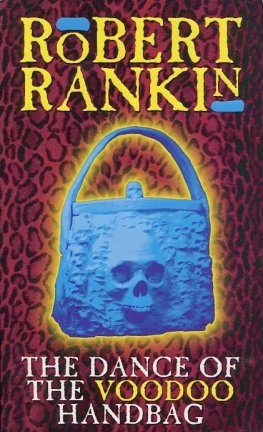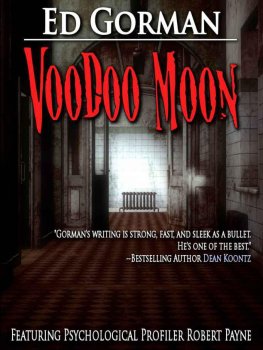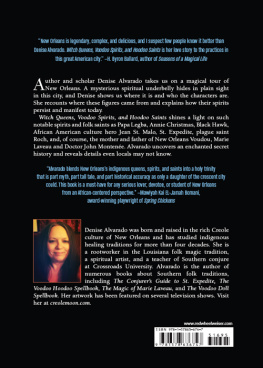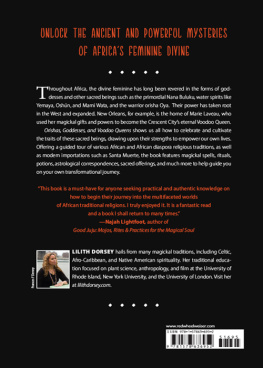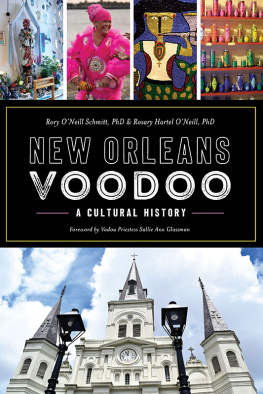VOODOO AND POWER
THE POLITICS OF RELIGION IN NEW ORLEANS 18811940
VOODOO
AND
POWER
KODI A. ROBERTS
LOUISIANA STATE UNIVERSITY PRESS BATON ROUGE
Published by Louisiana State University Press
Copyright 2015 by Louisiana State University Press
All rights reserved
Manufactured in the United States of America
First printing
Designer: Michelle A. Neustrom
Typeface: Whitman
Printer and binder: Maple Press
Library of Congress Cataloging-in-Publication Data
Roberts, Kodi A., 1979
Voodoo and power : the politics of religion in New Orleans, 18811940 / Kodi A. Roberts.
pages cm
Includes bibliographical references and index.
ISBN 978-0-8071-6050-3 (cloth : alk. paper) ISBN 978-0-8071-6051-0 (pdf) ISBN 978-0-8071-6052-7 (epub) ISBN 978-0-8071-6053-4 (mobi)
1. VodouLouisianaNew OrleansHistory19th century. 2. VodouLouisianaNew OrleansHistory20th century. 3. African AmericansReligion. 4. New Orleans (La.)Religious life and customs. I. Title.
BL2490.R585 2015
299.6'750976335dc23
2015019894
The paper in this book meets the guidelines for permanence and durability of the Committee on Production Guidelines for Book Longevity of the Council on Library Resources.

Dedicated to Erika and Gabriel
CONTENTS
ACKNOWLEDGMENTS
I would like to thank my advisor, Julie Saville, for taking me on as a student and making it possible for me to continue my graduate studies at the University of Chicago. I have little doubt that her meticulous reading of my material and no-nonsense advice has made this project possible. Without Dr. Savilles generosity and patience I dont know where I would be today. I would also like to thank Stephan Palmi, whose enthusiasm about this subject matter, unmitigated support for my research, and encyclopedic knowledge of religious practices throughout the African diaspora have changed the way I look at African American culture and inspired me to add something to the field that I hope is worthwhile. I would also like to thank Thomas Holt, whose early critiques of my writing and analysis changed the way I approached all potential subjects and who was kind enough to share his great experience in the field of African American history with me as I prepared my examination fields. A huge thank you also goes to Dr. Amy Dru Stanley, who allowed me to audit her class and eventually oversaw my study of American legal history. That work plays a small but extremely significant role in this book and has guided the projects I continue to work on today. Thank you to the research librarians at New Orleans Public Library, Northwestern State University in Louisiana, University of New Orleans, and Tulane University. Any historian knows that without these experts we would be lost in the sea of materials we find, if we were able to find relevant material at all. Thank you also to Dr. Dain Borges, who was good enough to read some of my work and gave me invaluable advice and comparative perspective to broaden my thinking about African American religious traditions. Thank you to Jim Grossman, who helped me add material from urban studies to my examination materials, and Dwight Hopkins and Curtis Evans from the University of Chicago Divinity School, both of whom also helped me think through various aspects of my work. Thank you to Carolyn Morrow Long, who was kind enough to read and critique some of the earliest work that went into this book, as well as Martha Ward and Ina Fandrich for meeting with me and offering advice on the subject matter. Thank you to D. Ryan Gray, who pointed me to integral secondary literature in anthropology that really changed the way I contextualized much of the conversation I hope to contribute to here. Thank you Thomas Adams and Steve Striffler, who gave me one of the first opportunities to showcase my work on this project. Thomas continues to introduce me to amazing scholars and opportunities that have enhanced the work in this book. Thank you to the entire staff at the Center for the Study of Race Politics and Culture at the University of Chicago: Trayce Matthews, Waldo Johnson, Ramon Gutirrez, and Michael Dawson. The Race Center provided an environment that made it possible for me to present my ideas and talk them over with scholars in fields who may have never seen my work under normal circumstances. The Centers Dissertation Fellowship, as well as research dollars I was guided to by Dr. Gutirrez, also provided the funding I needed to complete this project. Doctors Johnson and Dawson were also generous with their time in conversations that helped me to navigate the often confusing terrain of graduate study. Thank you to Trayce Matthews, who took a chance on a brash young graduate student by hiring me on at the Race Center and gave me advice and moral support for eight years that allowed me to make the most of the opportunities presented to me at CSRPC. Thank you to all my colleagues: Elizabeth Todd, Janette Gail, David Ferguson, Marcelle Medford Lee, Kafi Moragne, Nell Gabiam, SaunJuhi Verma, all of whom sat through workshops, commented on chapters, and listened to the presentations and mock job talks that helped me finally get this project to this phase. Thank you to editor Rand Dotson for his patience with me during the publication process as well as all the staff at LSU Press that worked with me on this book. Thank you also to William Cooper, who recommended this manuscript to LSU Press for publication.
VOODOO AND POWER
INTRODUCTION
VOODOO AS AMERICAN CULTURE
O n February 3, 2013, the Mercedes-Benz Superdome, formerly the Louisiana Superdome, located in downtown New Orleans, played host to the National Football Leagues Super Bowl XLVII. The NFLs annual championship game has become a cultural phenomenon and a testament to American capitalism. Because the game is often the most watched television broadcast of the year, commercial time during the contest is frequently the most expensive of the year. Thus, watching not just the game but the commercials has become something of a pop-culture tradition on Super Bowl Sunday. In 2013 Anheuser-Busch, the largest brewing company in the United States, purchased commercial time during the game to run a pair of ads for its Bud Light brand highlighting the unique culture of the host city. The star of the ads was Voodoo and its promise of power.
The first of the two ads depicts two young men carrying a rather bulky reclining chair out of a large white house. The men then take the chair on a journey through the city of New Orleans. They load the seat onto one of the iconic streetcars that shuttle tourists through the historic Garden District. One of the game-day enthusiasts is then shown seated in the chair outside what we can infer is a convenience store on what the very distinct street sign tells us is Ursulines Avenue, where they pick up a six-pack of Bud Light and place it in the chair. The unmistakable stucco walls, green French doors, and low balconies place the store in the Vieux Carr, or French Quarter, the citys oldest neighborhood and tourist center. After the pit stop our would-be movers carry the chair past a train depot and a power plant to the wrought-iron gates of a mansion, where they give their recently purchased beer to a large gentleman in a dark sport coat and a Kangol hat in exchange for admittance. In a dark hall lit by candles the men bring their seat before a regal figure seated on what can only be described as a throne. The figure, adorned in dark sunglasses and an immaculate white suit and top hat, is the rhythm-and-blues icon Stevie Wonder.
With his trademark ear-to-ear smile, Stevie asks his visitors, What do we have here? In response they ask the rather ominous Wonder, Do you do lucky chairs? Stevie replies, Son thats really not my thang. But with a dramatic snap of his fingers Stevie creates a spark and a flash. A lithe, manicured young woman played by the popular Dominican American film star Zoe Saldana is whisked via time-lapse footage down the winding staircase behind Wonder to his side. Zoe takes Stevies hand, bends over, and seductively whispers into his ear, Ill do it. With a snap of her fingers this time, Saldana disappears, only to reappear across the hall, sprawled sensuously across the lucky chair. She asks graciously, How much you guys need? Zoe snaps her fingers again, and we are transported back to the home where this adventure began.


